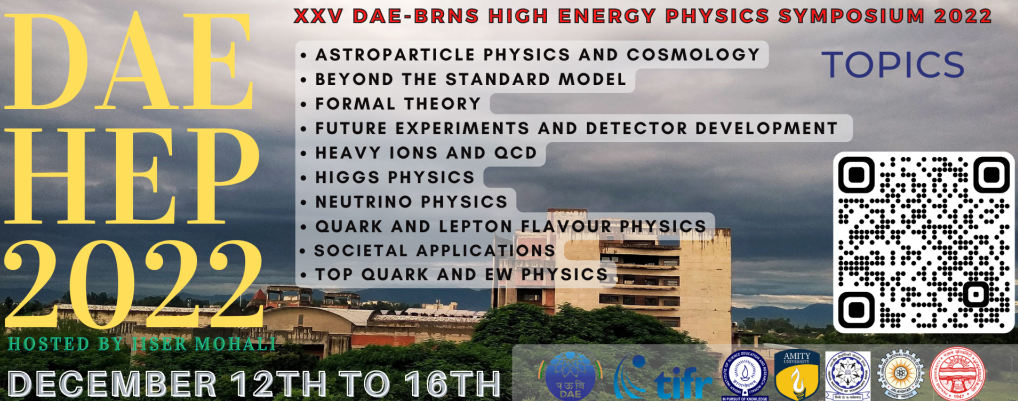Speaker
Description
In recent years, cosmological experiments like PLANCK-2018 [1,2] and BICEP/KECK [3] have shown the efficacy of single field slow-roll inflaton potential in explaining various experimental parameters regarding LSS, CMBR anisotropy and polarization data with significant precession. Therefore, obtaining a low energy effective inflationary theory consistent with such a class of potentials from superstring theory has been a subject of major efforts, although it is seriously at tension with swampland conjecture [4] and trans-Planckian censorship conjecture (TCC) [5]. In this paper, we have proposed that, such a connection is in principle possible in a pleasant way, if we stabilize all Kahler moduli by incorporating several perturbative and non-perturbative quantum corrections in the Kahler potential and super-potential respectively, a suitable uplifting mechanism and a novel canonical normalization technique. Our framework is based on $10d$ type-IIB superstring theory compactified on a $T^6/Z_N$ Calabi-Yau (CY) orientifold, equipped with three magnetized non-interacting and intersecting $D7$ branes, $O7$ planes and the non-trivial quantised $RR$ and $NS$ closed $3$-form world volume fluxes threading the $4$-cycles of $CY$-volume. The perturbative corrections arising from $\alpha'^3$ expansion in LVS [6], multi-graviton scattering upto one-loop with log-correction [7] and non-perturbative corrections related to $E3$-instanton [8] and gaugino condensation [9] break the supersymmetric no-scale structure giving an $F$-term $AdS_4$ potential which is dynamically uplifted by $D$-term potential originating from $U(1)$ charges of $D7$ branes in gravitational sector thereby providing the inflaton potential after normalization. All the parameters of the derived $dS_4$ potential are carefully tuned to maintain the inflationary plateau region. Cosmological parameters are obtained by $k$-space analysis of cosmological perturbations by dynamical horizon exit method [10] and found [11] to be consistent with PLANCK and BICEP/KECK constraints viz., $n_s=0.9652-0.9662$, $r=5.8\times 10^{-4}-6.2\times 10^{-4}$, $N=55.0-56.7$,$n_t=(-7.28\times 10^{-5} )-(-7.76 \times 10^{-5})$ at $k=0.001-0.009$ Mpc$^{-1}$.
References:
1. AKRAMI Y. et al., Astron. Astrophys., 641 (2020) A 10 .
2. AGHANIM N., et al., Astron. Astrophys., 641 (2020) A6.
3. ADE P.A. R. et al., Phys. Rev. Lett., 127 (2021) 151301.
4. AGARWAL P., OBIED G.,STEINHARDT P. J. and VAFA C., Phys. Lett. B, 784 (2018) 271.
5. BEDROYA A., VAFA C., JHEP 09 (2020) 123, 1909.11063.
6. BECKER K., BECKER M., HAACK M., and LOUIS J., JHEP, 06 (2002) 060.
7. ANTONIADIS I., CHEN Y., and LEONTARIS G.K., JHEP 01 (2020) 149.
8. BAUME F., MARCHESANO F. and WIESNER M., JHEP 04 (2020) 174.
9. HAACK M., KREFL D., LUST D., VAN PROEYEN A. and ZAGERMANN M., JHEP 01 (2007) 078.
10. SARKAR A., SARKAR C. and GHOSH B., JCAP 11 (2021) 029.
11. LET A., SARKAR A.,SARKAR C., and GHOSH B., EPL 139 (2022), no. 5 59002
Institutional mail: adsarkar@scholar.buruniv.ac.in
| Session | Astroparticle Physics and Cosmology |
|---|
